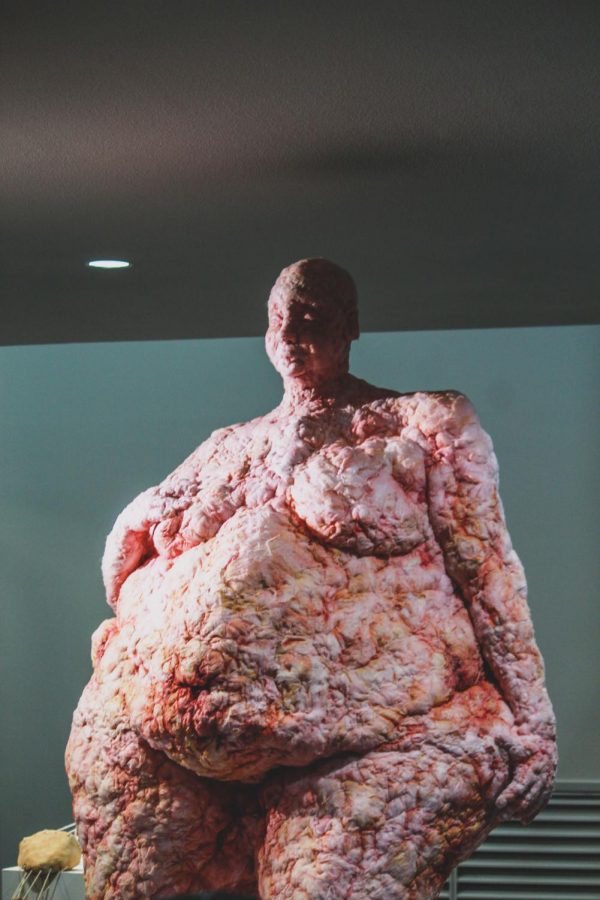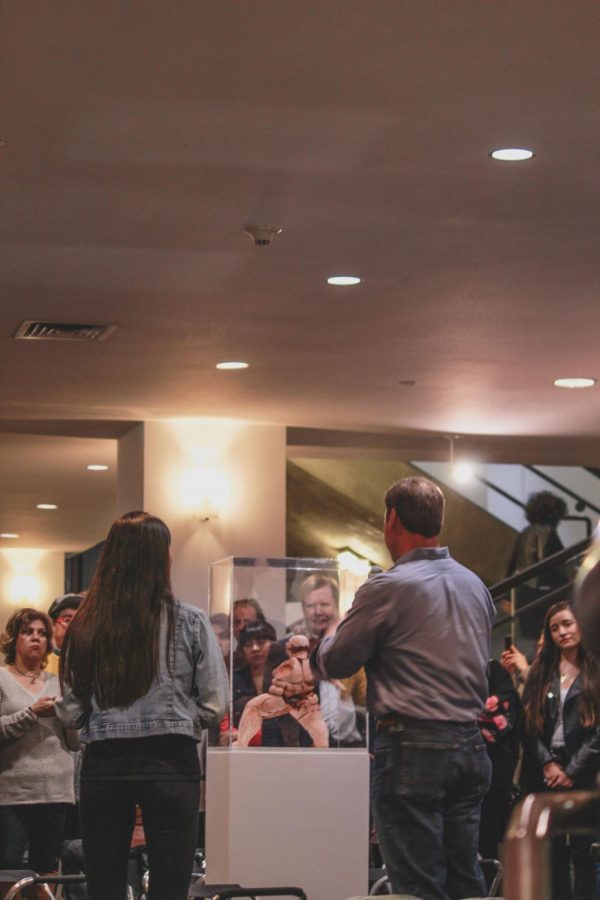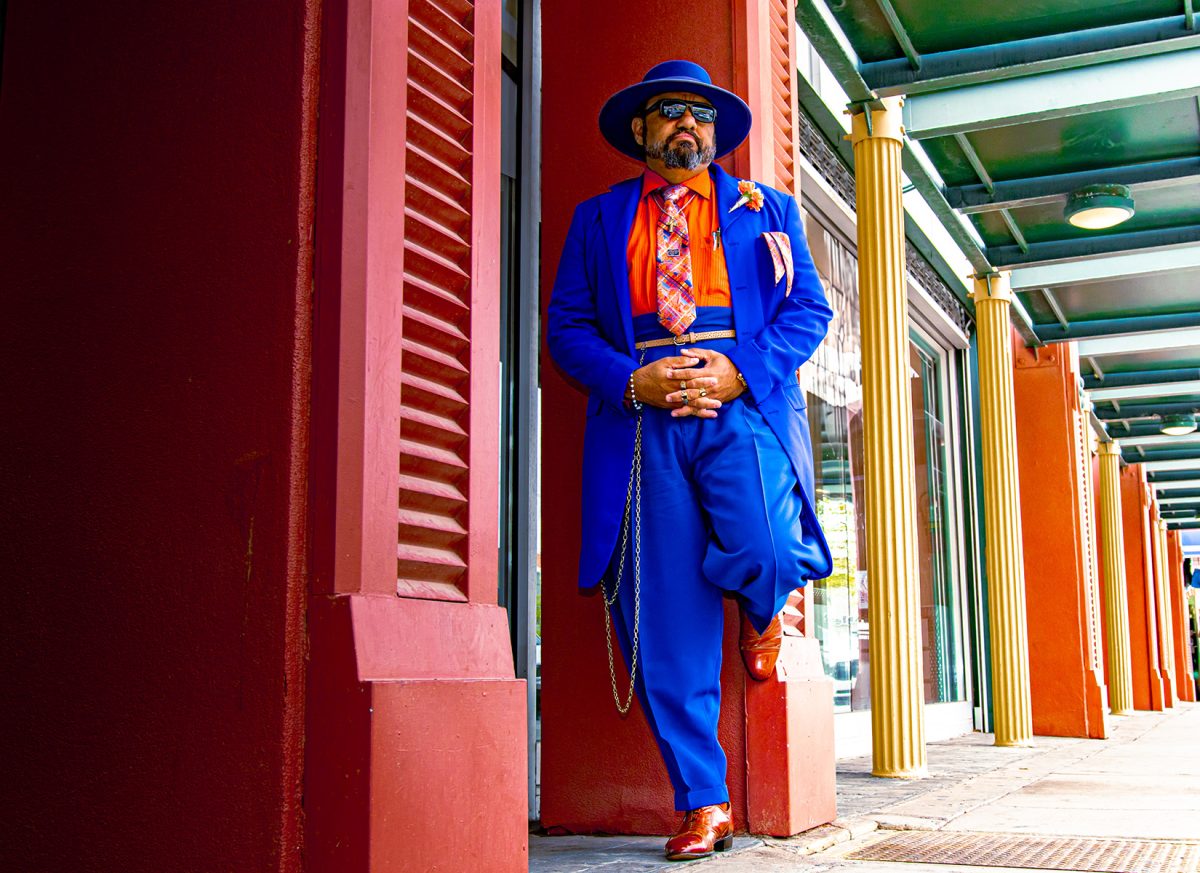UTEP graduate Anabel Nájera presented her figural installation “De la Vista Gorda” (From a Blind Eye) and held an artist talk on Jan.17 at the El Paso Museum of Art (EPMA) about the creative process behind her work and her experience working on a yearlong project with the EPMA.
Nájera recently graduated from UTEP with a Bachelor in Fine Arts, double majoring in ceramics and painting and was selected to be apart of the LabEPMA series.
“It is very rare that undergraduates are exhibited in a museum,” said Vincent Burke, associate professor, head of ceramics at UTEP and Nájera’s mentor.
The LabEPMA series was created by the EPMA and allows emerging artists to work alongside a curator from the museum to propose and create an art piece to exhibit. Every year a spot is reserved for one UTEP undergraduate student.
“It’s not really an award it’s more of an honor to be selected,” Burke said. “It’s such an amazing experience for students because this is what an artist aspires to do in the real world.”
Nájera is one step closer to becoming an experienced artist as she now worked alongside an EPMA curator in 2018 and created a 9-foot tall sculpture named “De la Vista Gorda” made of fiberglass, thread and acrylic that Nájera sewed together and painted to resemble a plump naked human body.
“‘De la vista gorda’ is a saying we have that means, to ignore a fact voluntarily and consciously and so in my culture we don’t talk about the body. It’s a sensitive subject and it just makes us uncomfortable,” Nájera said at her artist talk. “I thought it would be interesting to use ‘de la vista gorda’ for this body type.”
The idea of “De la Vista Gorda” came to Nájera when she established the idea to create a piece that explored the issues of unattainable beauty standards, particularly those on the border where she says there is an obesity epidemic, but over time Nájera’s thought process changed and she began to see the beauty of a larger body.
“I was studying sculptures more specifically those of Venus, the Goddess of Beauty, and in the first sculptures of her she had big hips and big breasts and it was seen as beautiful and healthy enough to carry a child,” Nájera said. “We move to later pieces of Venus and the form changed into a skinner body.”
Nájera then began questioning what beauty meant to her and noted how beauty standards are represented in society today.
“Now you have to be skinny, healthy and curvaceous all at the same time and I think it’s such an unattainable body goal and it’s hard for me to relate,” Nájera said. “There is this constant search for beauty — through the process I started thinking how I would make this body type beautiful.”
Nájera also showcased two other pieces, “The Rack” and “Broken,” both made out of ceramics. All of Nájera’s three pieces of art on display at the EPMA correlate with the topic of critiquing cultural standards of beauty and individual identity.
“The rack is a torture device that was used to pull apart the extremities of the body and dislocate the bones. I know it sounds violent, but I think it works as a metaphor by how and what we go through and end up with a fragmented self,” Nájera said. “In this case I left the extremities, arms and legs, and it left me with this undefined self and identity.”
Nájera now plans to take a small vacation before her travels to Germany where she’ll spend a few months as a resident artist to continue to build her skills.
“She has grown so much as an artist, but I think one thing that hasn’t changed is that she has remained driven and fierce with her work,” Burke said. “You have to have drive and ambition as an artist and she has it.”











